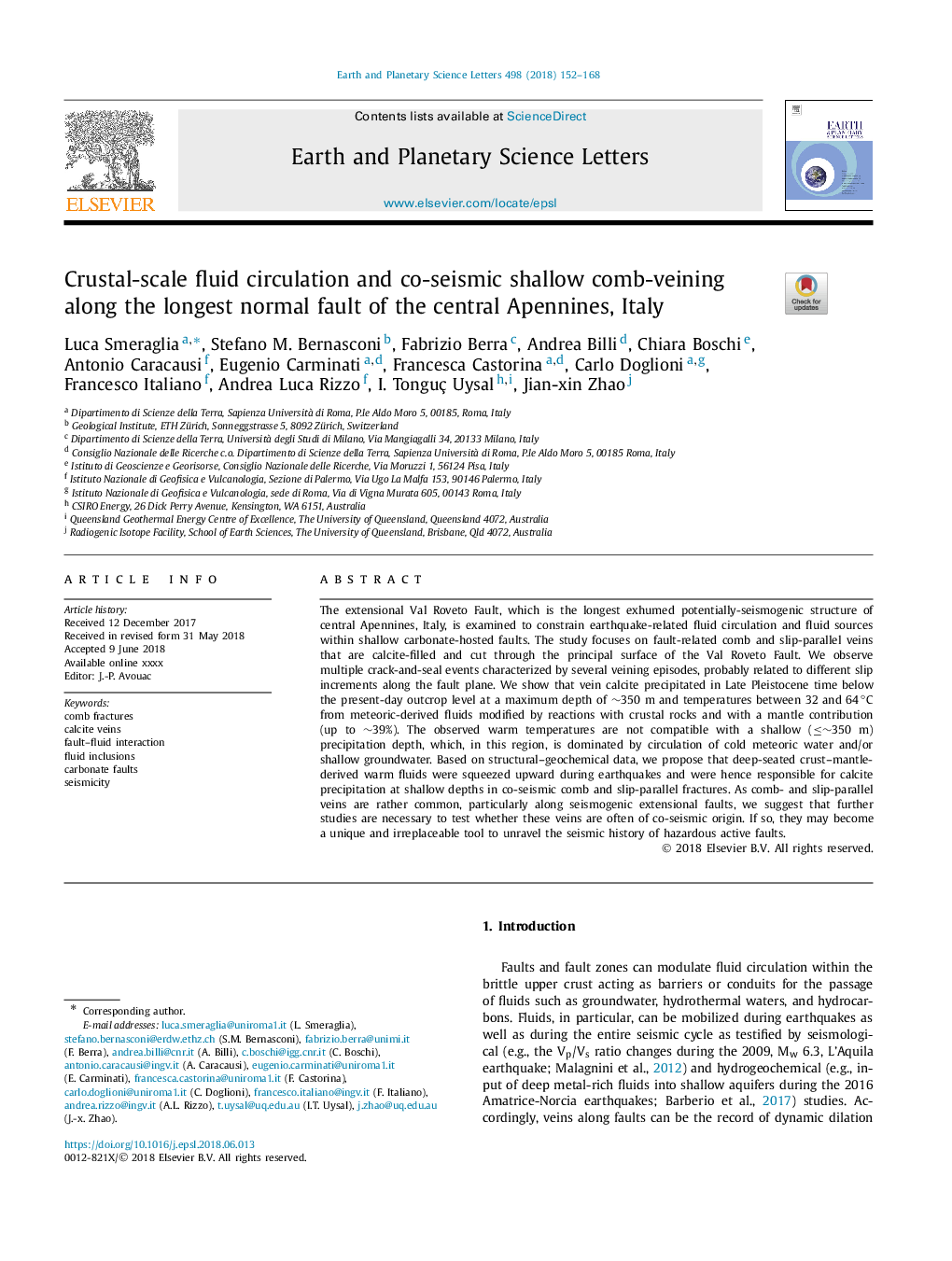| Article ID | Journal | Published Year | Pages | File Type |
|---|---|---|---|---|
| 8906714 | Earth and Planetary Science Letters | 2018 | 17 Pages |
Abstract
The extensional Val Roveto Fault, which is the longest exhumed potentially-seismogenic structure of central Apennines, Italy, is examined to constrain earthquake-related fluid circulation and fluid sources within shallow carbonate-hosted faults. The study focuses on fault-related comb and slip-parallel veins that are calcite-filled and cut through the principal surface of the Val Roveto Fault. We observe multiple crack-and-seal events characterized by several veining episodes, probably related to different slip increments along the fault plane. We show that vein calcite precipitated in Late Pleistocene time below the present-day outcrop level at a maximum depth of â¼350 m and temperatures between 32 and 64â°C from meteoric-derived fluids modified by reactions with crustal rocks and with a mantle contribution (up to â¼39%). The observed warm temperatures are not compatible with a shallow (â¤â¼350 m) precipitation depth, which, in this region, is dominated by circulation of cold meteoric water and/or shallow groundwater. Based on structural-geochemical data, we propose that deep-seated crust-mantle-derived warm fluids were squeezed upward during earthquakes and were hence responsible for calcite precipitation at shallow depths in co-seismic comb and slip-parallel fractures. As comb- and slip-parallel veins are rather common, particularly along seismogenic extensional faults, we suggest that further studies are necessary to test whether these veins are often of co-seismic origin. If so, they may become a unique and irreplaceable tool to unravel the seismic history of hazardous active faults.
Related Topics
Physical Sciences and Engineering
Earth and Planetary Sciences
Earth and Planetary Sciences (General)
Authors
Luca Smeraglia, Stefano M. Bernasconi, Fabrizio Berra, Andrea Billi, Chiara Boschi, Antonio Caracausi, Eugenio Carminati, Francesca Castorina, Carlo Doglioni, Francesco Italiano, Andrea Luca Rizzo, I. Tonguç Uysal, Jian-xin Zhao,
